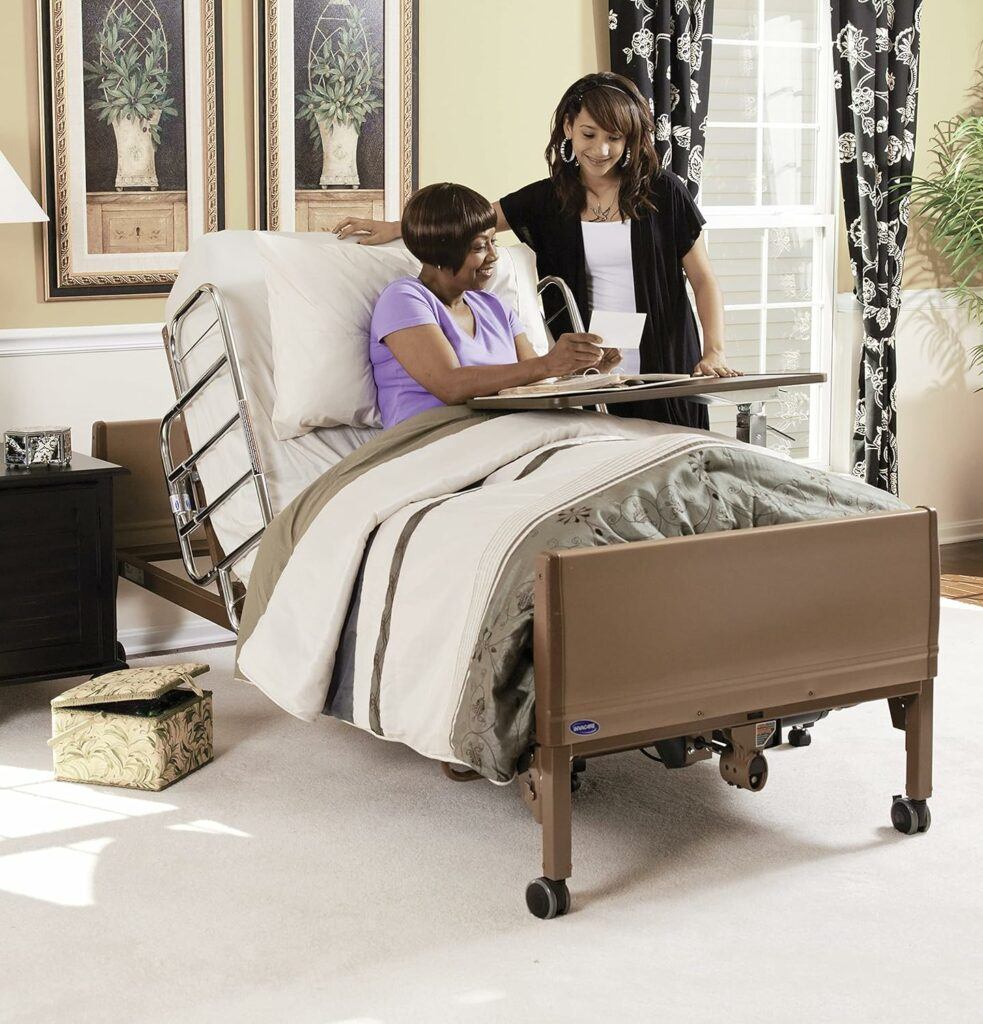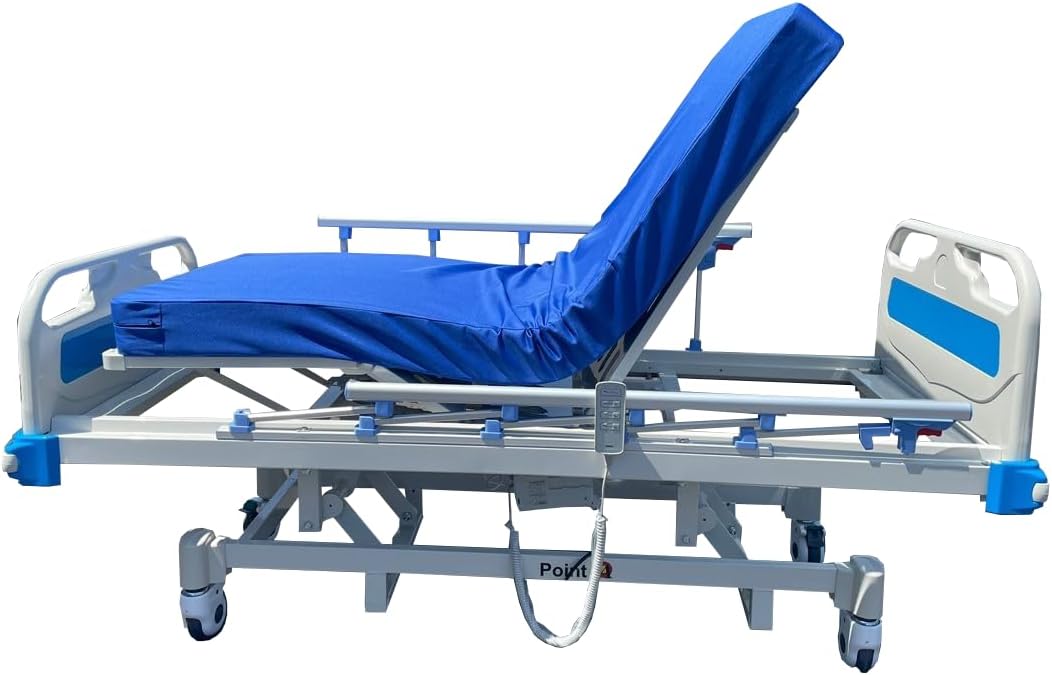Understanding if and how adjustable beds are covered by Medicare is critical, as they are often a substantial investment. For many seniors, having an adjustable bed can significantly improve quality of life by providing comfort and assistance with health conditions that make sleeping in a traditional bed challenging.

Medicare does provide coverage for adjustable beds under its durable medical equipment (DME) provisions when deemed medically necessary by a doctor. However, you must meet certain criteria and adhere to the guidelines set by Medicare to qualify for this benefit.
Selecting an adjustable bed that conforms to Medicare’s standards and working through the proper process is vital for ensuring that coverage is available to you.
Key Takeaways
- Medicare covers adjustable beds as DME if prescribed by a doctor and deemed medically necessary.
- Compliance with Medicare’s criteria is essential for coverage eligibility of adjustable beds.
- Engaging in the correct process and understanding the financial responsibilities are crucial when acquiring an adjustable bed through Medicare.
Understanding Medicare and Coverage for Adjustable Beds
When you’re considering whether Medicare will cover an adjustable bed, it’s essential to understand what Medicare covers and how different parts of the program work.
This will help you determine if your bed can qualify as covered durable medical equipment (DME).
What Is Medicare?
Medicare is a federally funded health insurance program primarily for people aged 65 or older, as well as for younger individuals with disabilities or certain medical conditions.
It helps with many healthcare costs, but it does not cover all expenses or the cost of most long-term care.
Different Parts of Medicare Explained
- Part A (Hospital Insurance): This part covers inpatient hospital stays, care in a skilled nursing facility, hospice care, and some home health care.
- Part B (Medical Insurance): Part B covers certain doctors’ services, outpatient care, medical supplies, and preventive services.
- Part C (Medicare Advantage Plans): This is an alternative way to receive your Medicare benefits, which bundles Parts A, B, and sometimes D (prescription drugs) into one plan, often with extra benefits.
- Part D (Prescription Drug Coverage): This part adds prescription drug coverage to Original Medicare and some Medicare Cost Plans, among others.
- Medigap (Medicare Supplement Insurance policies): Sold by private companies, which can help pay some of the remaining healthcare costs, like copayments, coinsurance, and deductibles.
Medicare Coverage for Durable Medical Equipment (DME)
Medicare Part B provides coverage for durable medical equipment (DME) when they are medically necessary and prescribed by a doctor.
An adjustable bed may be covered as DME if it’s used in your home and deemed necessary to treat a condition or injury.
Keep in mind that Medicare policies typically cover 80% of the approved cost, and you are responsible for the remaining 20% after your deductible is met.
If you have a Medicare Supplement Insurance (Medigap) policy, it may help cover the out-of-pocket costs.
Additionally, Medicare Advantage plans might offer additional benefits and coverage options.
Eligibility and Requirements for Adjustable Bed Coverage
To qualify for Medicare assistance with an adjustable bed, you must meet certain medical and equipment criteria deemed essential for your health.
Qualifying Conditions for Coverage
Medicare recognizes adjustable beds as durable medical equipment (DME) when they are considered medically necessary for your condition.
Conditions that often warrant an adjustable bed include severe arthritis, spinal cord injuries, or other ailments where the ability to adjust the bed’s position is crucial for the alleviation of pain and improvement of health.
The Role of a Physician’s Prescription
Your physician plays a pivotal role in the coverage process.
You need a detailed prescription from your doctor stating that the adjustable bed is essential due to your medical condition.
This prescription is a formal declaration of medical necessity and must be submitted to Medicare alongside your claim.
Distinguishing Between Medical and Comfort Needs
It’s essential to understand that Medicare coverage is contingent upon the bed being a medical necessity, not just for comfort.
A standard bed is generally not covered, whereas an adjustable bed may be covered if it provides therapeutic benefits to treat specific conditions.
After you meet your Medicare Part B deductible, Medicare will typically cover 80% of the approved cost, and you will be responsible for the remaining 20%.
Types of Adjustable Beds Covered by Medicare
Medicare covers various adjustable beds that are considered durable medical equipment (DME) when prescribed by your doctor for use in your home.
Understanding the features and differences between bed types is essential in determining what you may be eligible for under Medicare guidelines.
Hospital Bed Features and Accessories
Hospital Beds: Medicare typically covers hospital beds with basic features like adjustable head and foot sections.
Certain accessories necessary for your health and comfort can also be covered. These may include:
- Bed Rails: Side rails that are necessary for patient safety, which can be lowered or raised.
- Mattresses: A specific type of pressure mattress pad or gel or gel-like pressure mattress pad designed to prevent pressure sores.
- Air-fluidized Beds: These beds, heavy and expensive, are used for conditions with extensive skin issues and are only covered in specific circumstances.
Note: To get coverage, the bed must come from a Medicare-approved supplier.
Differences Between Bed Types
Different types of hospital beds may be covered based on your medical necessity:
- Fixed-Height Hospital Bed: If you don’t require frequent changes in bed height, this bed may be suitable.
- Variable-Height Hospital Bed: It allows changes in height, which could reduce the risk of injury when getting in and out of bed.
- Semi-Electric Hospital Bed: Features electronic adjustments of head and foot sections with manual height alteration.
- Total Electric Hospital Bed: All bed adjustments are fully electric, enhancing your comfort and ease of use.
Heavy-Duty and Extra-Wide Beds: For individuals who need a larger sleeping area or have a higher weight capacity, heavy-duty, extra-wide hospital beds may be covered.
Choose your adjustable bed carefully, as it must meet specific criteria to qualify for Medicare coverage.
Process of Acquiring an Adjustable Bed

Acquiring an adjustable bed with Medicare coverage involves specific steps to ensure your expenses are minimized. You’ll work with approved suppliers and choose between rental and purchase options depending on your needs.
Working with Medicare-Approved Suppliers
To obtain an adjustable bed that Medicare will cover, you must first ensure that your supplier is Medicare-approved.
This means the supplier has been certified to meet certain standards and agrees to accept the Medicare-approved amount for durable medical equipment (DME).
When you choose a provider from this approved list, you’re ensuring that Medicare will pay its share of the cost for the DME supplier.
- Find a Medicare-approved supplier nearby
- Verify they offer the required type of adjustable bed
- Confirm that the supplier accepts the Medicare-approved amount
Options to Rent or Purchase
Medicare provides you with options to either rent or purchase an adjustable bed, depending on the duration of your need for the equipment.
- Rental: If you need the bed for a temporary period, Medicare may cover the cost of renting the bed.Often, Medicare will pay for the rental for up to 13 months, after which you own the bed.
- Initial Rental Period: Medicare covers a monthly rental fee.
- Maintenance: Responsibility for maintenance and repairs lies with the rental provider during the rental period.
- Purchase: If you have a long-term need, purchasing might be the most suitable option.In this case, Medicare pays a portion of the purchase price based on the Medicare-approved amount, and you pay the remaining cost.
- Upfront Cost: You cover your portion upfront, and Medicare pays 80% after deductible.
- Maintenance: Once purchased, you are responsible for maintenance and repairs.
Financial Aspects of Adjustable Bed Coverage

Navigating the financial aspects of adjustable bed coverage can be complex.
Understanding the nuances of Medicare’s structure, such as deductibles, copayments, and coinsurance, is crucial for accurately estimating your expenses.
Understanding Deductibles and Copayments
When Medicare approves an adjustable bed, you’re initially responsible for the Medicare Part B deductible.
After meeting the deductible, a standard 20% copayment applies to the Medicare-approved amount for the bed.
Confirming that both the prescribing physician and the bed supplier are enrolled in Medicare is important to avoid unexpected costs.
Calculating Coinsurance and Out-of-Pocket Costs
Once the deductible is met, Medicare will typically cover 80% of the approved cost for the adjustable bed.
You must pay the remaining 20% coinsurance, which can vary depending on the total cost of the bed.
To help manage these expenses, consider enrolling in a Medigap plan, which can cover additional costs, or a Medicare Advantage plan, which may offer added benefits.
Options Beyond Traditional Medicare
- Medicare Advantage: May offer extra coverage for adjustable beds. Check the specifics of your plan.
- Medigap: This supplemental insurance can help cover copayments, coinsurance, and deductibles.
- Medicaid: If eligible, may provide additional financial assistance.
- VA Benefits: Veterans may receive coverage through VA resources.
- Medicare Assignment: Choosing suppliers who accept Medicare assignment can result in lower costs.
Traditional Medicare (Part A and B) involves deductibles and copayments. Meanwhile, Medicare Advantage (Part C) plans may cover additional services and costs. Always verify the terms with your provider.
Health Conditions Benefited by Adjustable Beds
Adjustable beds can significantly improve your quality of life if you’re dealing with certain medical or health conditions. These types of beds provide you with the necessary support and positioning that may alleviate symptoms and enhance comfort during rest.
Sleep Apnea and Respiratory Issues
If you’re struggling with sleep apnea or respiratory issues like chronic pulmonary obstructive disease (COPD), an adjustable bed can be a valuable piece of medical equipment. Elevating your head and upper body can help to open airways, reduce snoring, and ease breathing during sleep.
- Sleep Apnea: Elevating the head to reduce airway obstruction.
- COPD: Improved lung function through an angled sleeping position.
Bone and Joint Conditions
Dealing with bone and joint conditions such as severe arthritis or back pain can be debilitating. An adjustable bed can assist in finding a comfortable sleeping position that supports good body alignment, reducing pressure on affected joints and easing discomfort.
- Severe Arthritis: Relieves joint pressure for better sleep comfort.
- Spinal Cord Injuries and Back Pain: Promotes proper spine alignment and reduces back strain.
Circulation and Cardiac Problems
Proper blood circulation is crucial, especially if you’re living with cardiac disease. Elevating your legs with an adjustable bed may improve venous return and reduce the workload on your heart. It also aids in reducing swelling and improving overall circulation.
- Cardiac Disease: Can ease the heart’s work by optimizing sleeping positions.
- Improved Circulation: Elevates legs to help prevent pooling of blood in the extremities.
Additional Considerations for Adjustable Bed Coverage
When seeking Medicare coverage for an adjustable bed, there are specific requirements and processes involved. Detailed documentation from your doctor and an understanding of Medicare’s limitations are crucial for a successful claim.
Documentation and Medical Records
To substantiate your claim, Medicare requires detailed medical records and a prescription from your physician. This documentation should clearly state the medical need for an adjustable bed, proving it’s not merely for comfort but is necessary to treat or manage your condition. Ensure the paperwork includes:
- A detailed description of your health issue.
- An explanation of how an adjustable bed will assist with your situation.
- A statement that you are under the physician’s care for the condition that justifies the need for an adjustable bed.
Navigating the Filing and Claims Process
Understanding how to file a claim with Medicare is essential. Start by ensuring both your physician and the equipment provider are enrolled in Medicare. Then, follow these steps:
- Obtain the adjustable bed through a Medicare-approved supplier to ensure coverage eligibility.
- Submit all the required documentation in a timely manner.
- Keep record of all correspondence and submissions.
If you are in a skilled nursing facility, check with the administration to understand how Medicare coverage works in your situation, as it may differ from standard procedures.
Understanding Limitations and Exclusions
Medicare may not cover all types of adjustable beds or may only cover certain features. Understanding these limitations and exclusions will help set realistic expectations. Note that:
- Medicare typically covers 80% of the approved amount, with the remaining 20% being your responsibility.
- Certain features of an adjustable bed might be considered convenience rather than medical necessity and may not be covered.
- The need for rental vs. purchase can affect eligibility and coverage; temporary needs often result in rental coverage.
Supporting Equipment and Accessories
When it comes to your comfort and health, having the right supporting equipment and accessories for your adjustable bed is crucial. These items not only augment the bed’s functionality but can significantly improve your quality of life.
Decubitus Care and Pressure Relief
For preventing pressure sores—also known as decubitus ulcers—a combination of specialized mattresses and padding is essential. Air pressure pads or water pressure pads play a pivotal role in redistributing weight and reducing pressure on the skin. Consider incorporating a synthetic sheepskin pad or a lambswool sheepskin pad for additional comfort and improved air circulation. These pads can help reduce the likelihood of skin breakdown and facilitate the healing process.
- Medical Necessity: Items like pressure relief pads are typically covered by Medicare if a doctor confirms they are medically necessary for your condition.
Mobility and Safety Aids
In terms of mobility and ensuring safety, strategically placed bed rails and walkers can help you move into and out of bed more safely. Bed rails serve a dual purpose by preventing falls and offering support when you’re changing positions or transferring to a walker or wheelchair.
- Bed Frames: Ensure you have a solid base with a hospital-grade adjustable bed frame that works in tandem with your mattress and accessories.
- Safety for Children: For younger patients with special needs, a fully enclosed pediatric crib might be covered if deemed a medical necessity, ensuring the child’s safety and security during the night.
Beyond Basic Coverage
While Medicare Part B typically covers durable medical equipment, including some types of adjustable beds, your coverage for these items may have limits. If you require features beyond what basic Medicare offers, exploring additional insurance options can be beneficial.
Exploring Additional Insurance Options
If you need features beyond basic Medicare coverage, supplemental insurance plans might provide the additional financial support necessary. These plans, often referred to as Medigap, cover costs not included in Original Medicare, such as the Part B deductible.
Keep in mind that Medigap plans do not typically offer extra benefits for services like dental or vision care, which you may need as well.
Benefits of Medicare Advantage Plans
Medicare Advantage (Part C) plans can offer broader coverage, potentially including the adjustable beds that go beyond the basic models covered by Medicare Part B. Medicare Advantage plans are offered by private insurance companies approved by Medicare, and often include additional benefits such as dental, vision, and other health and wellness programs.
These MA plans might also have different deductible structures and financial assistance options, which can provide you with more comprehensive coverage. It’s essential to check each provider’s plan specifics to understand what is included and at what cost.
Remember to confirm that your adjustable bed provider is within the plan’s network to ensure coverage. The costs and benefits can vary significantly across different Medicare Advantage plans, so you should review these details carefully when considering your choices.
Frequently Asked Questions
When exploring whether Medicare will cover the cost of an adjustable bed, you need to understand the approval process, the specific criteria required, the role of a physician’s prescription, the types of beds covered, approved suppliers, and coverage for specialized bed models.
How do I get Medicare to approve an adjustable bed for a senior?
To get Medicare to approve an adjustable bed for a senior, you must first have a physician prescribe it as medically necessary. You will then need to ensure the equipment is supplied by a Medicare-approved supplier that participates in Medicare.
What criteria must be met for Medicare to cover the cost of a senior’s adjustable bed?
Medicare coverage for a senior’s adjustable bed hinges on medical necessity. The bed must be prescribed by a doctor for use in the patient’s home, and it’s usually covered under Medicare Part B as durable medical equipment (DME).
Can a doctor prescribe an adjustable bed that Medicare will pay for?
Yes, a doctor can prescribe an adjustable bed, and if it’s deemed medically necessary, Medicare may pay for it. It is typically categorized under DME when it’s part of treatment or care for a specific condition.
What types of beds does Medicare cover for elderly patients?
Medicare generally covers hospital beds for home use, but coverage can extend to certain consumer adjustable beds if they’re considered medically necessary. This does not include beds that are only for comfort or convenience.
Are there specific mattress and bed suppliers that are Medicare-approved?
Yes, there are specific suppliers that are Medicare-approved. To ensure coverage, you should source the adjustable bed from a supplier that participates in the Medicare program and adheres to the Medicare standards.
Does Medicare provide coverage for specialized beds, such as Tempurpedic models, for seniors?
Medicare provides coverage for medical equipment that is necessary to treat or alleviate a health condition. So, specialized beds, like Tempurpedic models, are typically not covered unless they meet specific medical criteria.

